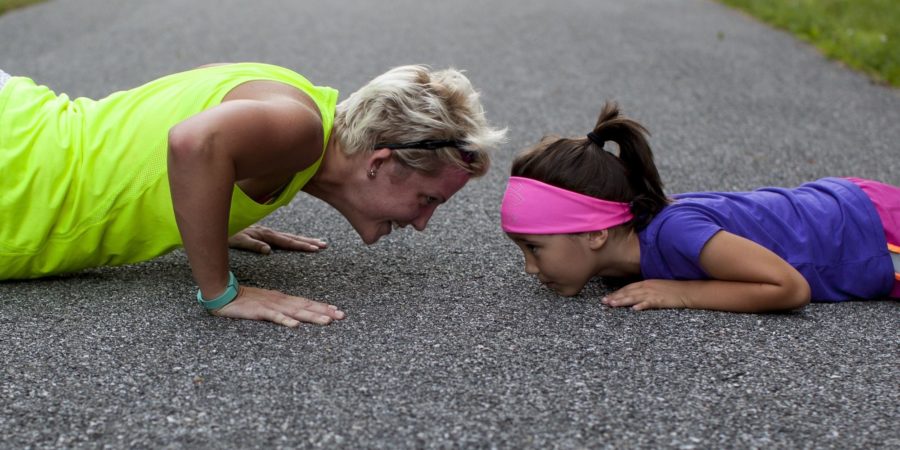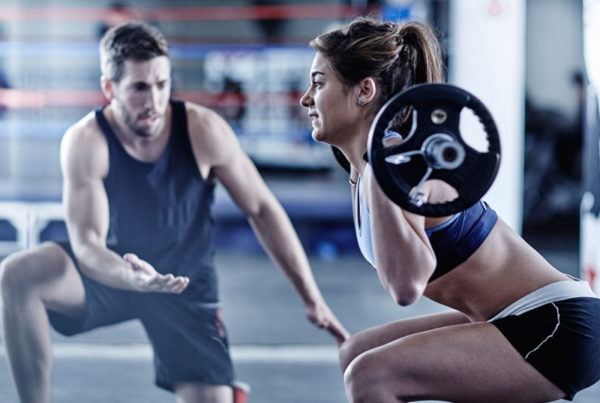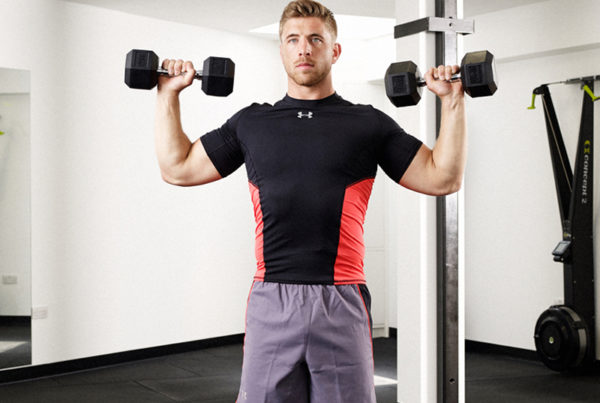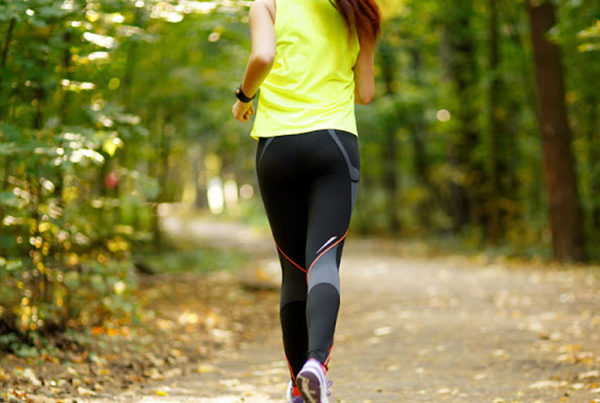Bodyweight training. What is it?
Bodyweight training really is exactly what it says on the tin; using your body weight as resistance when training. A simple concept that, when performed well, can be highly effective, time-efficient, space-saving and cost-free. It’s perfect for all levels of fitness and especially useful if you are pressed for time.
How does it work?
The great thing about bodyweight training is that you are in total control of the execution of the exercise and movement.
Bodyweight training very much falls under training that is often referred to as functional or functionally beneficial. In the last ten years, the fitness industry has had a real movement towards exercise that feels, looks and benefits you in daily life. Using movements such as bending and reaching to train your body in similar ways to how you perform in your daily life help make you stronger and more prepared for a variety of movement. Hence the term, functional.
To maximise your results from bodyweight training you need to ensure you are challenging the variables of each movement which means that you continue to change the way each exercise is performed over time to show progression. This could mean changing the direction, speed, height and range of motion etc. The body responds well to variable demands for your joints, muscles and nervous system, making them stronger and susceptible to when these changes occur subconsciously, throughout the day and generally in life. These subtle changes also keep your workout interesting.
A bodyweight workout does not need to be complex. You can simply pick 4-5 exercises and work through them for a desired period of time or by cycling through them by performing a set number of repetitions. Like all workouts, you should start off with an achievable target and progress as you improve. A ten-minute workout may be all that you need to get started. Depending on the intensity, 30-minute workouts are perfect during a lunch break, before work or if you in a rush.
An initial benefit of bodyweight exercise is the strength in movements that you feel. The ability to bend, reach, lift, climb stairs or change direction will start to improve. As the intensity improves and you become fitter, you will start to notice body shape changes and a reduction in body fat. Posture is also a key benefit that improves your body shape (a more upright position), stronger stance and aligned appearance are great for self-esteem and building confidence.
Why is bodyweight training so good?
Bodyweight training is great as it can be done anytime, anywhere. Juggling a busy family life means it can often be difficult to get to the gym as much as you like but that doesn’t mean your fitness should be compromised.
If you’ve got a spare 30 minutes to an hour, bodyweight exercises provide an easily accessible opportunity to get active with no need for equipment. Set aside a small area in your living room, spare room or even your garden if it’s a nice, sunny day outside and dedicate your time and attention to the workout.
Bodyweight training is functional too which means the exercises you’re performing have a genuine benefit to your day-to-day life. Progression is seen in many ways and if you’re able to get into the habit, you’ll find everyday tasks such as climbing the stairs or briskly walking to the shops become much simpler and more manageable. We would recommend you keeping a track/diary of your workouts too as it makes you more accountable. For example, if you initially did 10 squats in 30 seconds when you first started your at-home bodyweight workouts and can now do 15, it’s incredibly rewarding to see where you’ve come from and keeps you motivated.
It’s also true that exercise can be effective for stress relief and make you happier and feeling more positive. Exercise helps the release of endorphins which trigger a happy feeling in your body and mind, giving the opportunity to re-energise by dedicating time for you to focus your energy.
Who is it good for?
In short, everyone. Bodyweight training is so versatile and with no weights involved, you have full control of the exercise so you can tailor the difficulty to your own personal fitness level. For example, a push-up, which is listed in my example circuit below, can initially be performed on the knees but as you progress and your strength develops, you can try this on your toes to make the movement more complicated and challenging.
Likewise, the intervals that you perform your workouts at are completely flexible. While you may initially want to start with 30 seconds work and 30 seconds of rest, you can increase the difficulty and intensity of the workout by increasing the duration of the work and cutting down the rest periods – the best thing is that it’s completely up to you.
Bodyweight workouts are a staple of any workout plan. It’s all well and good being able to lift heavy weights but mastering your own body weight is a great platform to build your fitness from.
Try this workout
Attempt each exercise for 30 seconds with 30 seconds rest. After the last exercise, take a 60 second rest. Repeat the programme three times in total. I’ve included some notes on each exercise to show how users can increase the difficulty of the movement or try something different to target different muscle groups.
- Bodyweight Squats
-
- Target area: Lower body / All-body
- Instructions:
- Stand with your feet around hip width apart
- Keeping your upper body in an upright position, lower yourself by bending at the hip, knees and ankles
- Try and keep your feet flat on the floor
- Lower to a position that you can manage
- Control the movement
Note: Change to a wider and narrower stance position can help to target more of the inner and outer leg muscles.
- Push ups (on knees or toes)
- Target area: Chest and arms
- Instructions:
- Place the hands flat on the floor just wider than shoulder width
- Lower the chest to the floor and extend back to the start position
Note: Variations of wider and narrower hand or foot position. You could also incline your hands or feet. Make sure you tighten your core muscles so your back doesn’t arch or put pressure on your lower back.
- Kneeling start lunges
- Target area: Lower body
- Instructions:
- Start in a kneeling position
- Stand and stride forwards into a lunge
- Return back to kneeling
- Stand and lunge using the opposite leg (alternating)
Notes: Using a cushion under the knees is fine if required. Start standing if needed. Lunging to the side is also a great way to challenge yourself laterally (and target other muscles).
- Lower Back Raise
- Target area: The muscles that run either side of the spine and the glutes
- Instructions:
- Lay face down
- Keeping your feet on the floor raise the chest from the floor
- Hands can be on the side of your head (temples)
Note: Keep the head looking down to prevent over-straining of the neck.
- Mountain climbers
- Target area: Core and upper body
- Instructions:
- Start in an extended arm position on the floor (also on the toes)
- In an alternating pattern raise one knee towards the chest in a running type movement)
Note: For a harder alternative use both legs in a jumping in-and-out action. Often referred to as squat thrusts.
Do’s and Don’ts
Do:
- Warm-up beforehand by performing some mobility-based exercises such as rotations, arm circles and knee raises to prepare
- Work at an intensity that feels challenging for your own current level and ability – don’t compete against others
- Take care to perform exercises correctly. Poor technique increases the likelihood of injury and can prevent benefits
- Take longer rests if needed and stay hydrated
- Change and modify your exercises to keep your body working and being challenged in a variety of ways
Don’t:
- Feel the need to copy others on the internet and hurt yourself by performing exercises that aren’t suitable
- Overtrain by training every day and not giving yourself time to recover and gain benefit
- Sacrifice technique by going fast or feeling that you need to include jumping or high impact exercises. Muscles respond to the tension that they feel, therefore focus on the movement quality and not just counting endless amounts of repetitions
- Be afraid to rest. Recovering allows you to work hard during the movement. You will naturally fatigue as your muscles work
- Feel that you need to completely change exercises in every session! Our bodies will adapt over time. You only need to make small modifications or variations to create a greater response and continue to improve




